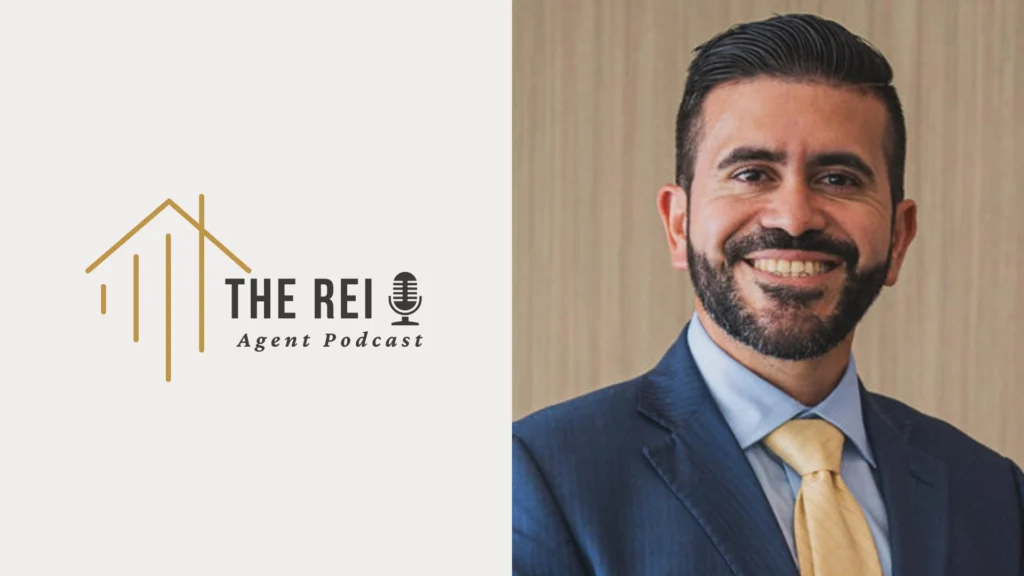Key Takeaways
- Understanding care models and resident needs is crucial to creating a successful assisted living facility.
- Market research on demographics, property values, and competition is essential for making informed investment decisions.
- Effective management and marketing strategies lead to higher ROI and profitability in assisted living real estate investing.
Introduction: A Step-by-Step Guide to Assisted Living Real Estate Investing
Jumping into assisted living real estate investing is both exciting and rewarding, especially when you’re dedicated to improving senior care.
Start by understanding the needs of the residents—think daily assistance and medical support. Analyze local demographics to find areas with a growing senior population but limited facilities, then pick properties near healthcare centers.
Consider financing options like loans or partnerships to spread the risk. Don’t forget to look into local zoning laws and staff training for better operational efficiency.
Focusing on resident satisfaction and well-being can lead to a thriving, profitable investment.
Keep exploring to uncover each step in detail!
Understanding Assisted Living
Understanding assisted living is fundamental if you’re considering investing in this type of real estate. When you immerse yourself in assisted living, you’re entering a world where care models are at the forefront. These care models guarantee residents get the support they need, whether it’s help with daily activities or medical care.
Knowing the different models can help you choose the right facility to invest in.
Residents in assisted living facilities have a variety of needs. Some might need help with dressing, bathing, or managing medications, while others may require more specialized care. Understanding these needs is vital because it directly impacts the type of services your property should offer.
You want your investment to cater to these needs effectively, making sure residents are happy and well-cared for.
When you focus on resident needs and care models, you’re setting your investment up for success. You’ll create a place where people feel safe and cared for, which is attractive to potential residents and their families.
Remember, a happy resident means a thriving business. So, engage with enthusiasm, and you’ll find that investing in assisted living can be both rewarding and profitable.
Market Research
To really succeed in assisted living real estate, you’ve got to nail your market research. Start by understanding the local demographics to know who your potential residents are, then analyze property values to guarantee you’re making a smart investment. Don’t forget to assess competition levels, because knowing your competitors will help you stand out and thrive in the market.
Understanding Local Demographics
Knowing your local demographics is essential when investing in assisted living real estate. You need to understand the senior population trends in your area. Are there enough seniors to support a new assisted living facility? Look at the age distribution and growth rate of the senior population. Check local census data or demographic reports for insights.
Engage with the community to get a feel for their needs. You might attend town meetings, talk to local healthcare providers, and even chat with residents. This helps you gauge the demand for assisted living and understand what services and amenities are most important to them.
By understanding senior population trends, you can make informed decisions about where and what type of facility to invest in. For instance, if a community has a rapidly growing senior population but limited assisted living options, that’s a strong signal for a good investment opportunity.
Don’t underestimate the power of community engagement. Building relationships with local organizations and leaders can provide valuable insights and support for your project. It’s all about finding the right balance between data and personal connections to guarantee your investment thrives.
Analyzing Property Values
A critical aspect of investing in assisted living real estate is analyzing property values through thorough market research. This step is essential because it guarantees you’re making informed decisions that can lead to profitable ventures. Immerse yourself in property appraisals to understand the current worth of potential investments. Also, keep an eye on value trends to predict future changes.
Here’s how you can get started:
- Study Recent Sales: Look at recent sales of similar properties in the area. This helps you gauge the market and see if property values are rising or falling. Use online databases and local real estate listings to gather this info.
- Consult with Professionals: Hire a professional property appraiser to provide an accurate valuation. Their expertise offers insights you might miss, assuring you don’t overpay or undervalue a property.
- Analyze Economic Indicators: Research local economic factors like employment rates and population growth. These indicators can influence property values considerably. A thriving local economy often means higher property values.
Assessing Competition Levels
Understanding the competition levels in the assisted living market is essential for making savvy investment decisions. You need to engage in competition analysis, which involves looking at who else is in your target area and what they offer. It’s like scouting out the other players before you join the game. By knowing your competitors, you can figure out how to set yourself apart and attract more residents.
Market saturation is a key factor to evaluate. If there are too many assisted living facilities in one area, it might be harder for yours to stand out. Think of it like a crowded beach—it’s tough to find a good spot, right? You want to find a location where there’s demand but not too much supply. Research the number of facilities, their occupancy rates, and the services they provide. This info helps you spot gaps in the market, where your investment can shine.
To make your facility more attractive, offer unique amenities or specialized care options. Stand out by understanding what potential residents need and delivering it better than anyone else. With thorough competition analysis, you’ll be ready to make confident, informed investment choices.
Financing Options
When diving into assisted living real estate investing, exploring financing options is essential to your success. Let’s break down some exciting ways to fund your investment.
- Alternative Financing: Don’t limit yourself to traditional bank loans. Consider government grants, which can provide significant financial support. Crowdfunding options are also fantastic—pooling small investments from many people can quickly add up. Private investors are another excellent choice. They might be looking for new opportunities and willing to back your project.
- Loan Types and Investment Partnerships: Understand the variety of loan types available. FHA loans, commercial real estate loans, and even personal loans can be used for your assisted living property. Forming investment partnerships can also be beneficial. Partnering with others can spread the risk and increase your investment capital.
- Equity Financing and Retirement Funds: Equity financing involves trading a percentage of ownership in your property for investment money. This can be a great way to raise funds without taking on debt. Additionally, tapping into retirement funds, like a self-directed IRA, can be an effective way to finance your project without upfront cash.
Exploring these options will set you on the path to success in assisted living real estate investing.
Legal Considerations
Steering through the legal terrain of assisted living real estate investing is vital to guarantee compliance and protect your investment. First, check local zoning regulations to verify your property is suited for an assisted living facility. Zoning laws can vary widely, so it’s important to know what’s allowed in your area.
Next, understand tenant rights and draft solid lease agreements. These documents outline the responsibilities of both parties and help avoid disputes. Don’t forget liability insurance; it’s a must to shield you from potential lawsuits. You want your facility to be safe and compliant, so adhere to all health regulations and safety standards. Regular inspections can help you stay on track.
Licensing requirements are another significant area. Each state has its own rules for operating assisted living facilities. Make sure you’re fully licensed to avoid hefty fines or even closure. Property taxes can also affect your bottom line, so stay updated on any changes that might impact you financially.
Property Selection
Choosing the right property for your assisted living investment is essential for success. You want to find a place that not only meets your needs but also appeals to your future residents. Let’s explore three key elements to reflect on when selecting your property.
- Property Types: Look into various property types like single-family homes, apartment buildings, or even purpose-built facilities. Each has its pros and cons. Single-family homes feel cozy and intimate, while larger buildings can accommodate more residents. Consider what kind of atmosphere you want to create.
- Location Factors: The location of your property is significant. Reflect on the proximity to hospitals, shopping centers, and parks. Your residents will appreciate being close to amenities, and family members will find it convenient. Safe neighborhoods with low crime rates are a must.
- Accessibility and Adaptability: Confirm the property is or can be made accessible for seniors. Look for wide doorways, ramps, and grab bars. If these features aren’t present, contemplate the cost and feasibility of adding them.
Facility Management
After selecting the perfect property for your assisted living investment, the next step is managing the facility effectively. You’ll need to focus on several key areas to guarantee success. First, prioritize staff training. Well-trained staff guarantees operational efficiency and resident satisfaction. Make sure everyone knows safety protocols inside out, as they’re essential for keeping your residents safe.
Facility maintenance is another must. Keep everything in tip-top shape to avoid costly repairs down the road. Plus, a well-maintained facility boosts resident satisfaction. Don’t forget about compliance regulations. Staying up-to-date with these rules helps you avoid fines and keeps your facility running smoothly.
Technology integration can be a game-changer. Use modern tools to streamline operations and improve communication. For instance, digital record-keeping can save time and reduce errors. Community engagement is also crucial. Get involved with local events and encourage residents to participate. This builds a sense of belonging and enhances their quality of life.
Marketing Strategies
Marketing your assisted living facility effectively is crucial to attracting potential residents and guaranteeing long-term success. You need to focus on strategies that highlight your facility’s unique features and create a welcoming image.
- Digital Marketing and Social Media: Use digital marketing to reach a wider audience. Create engaging content on social media platforms like Facebook and Instagram to showcase your facility. Share success stories, daily activities, and testimonials to build trust and interest.
- Community Engagement and Local Partnerships: Get involved in your community. Partner with local businesses, healthcare providers, and community centers. Attend and sponsor local events to increase visibility. Building strong relationships locally can lead to valuable networking opportunities and referrals.
- Referral Programs and Branding Strategies: Develop a referral program that rewards current residents and their families for bringing in new residents. Confirm your branding strategies are consistent and professional, highlighting the care and quality your facility offers. A strong, recognizable brand helps build credibility and trust.
ROI and Profitability
Attracting residents through effective marketing lays the foundation, but understanding the return on investment (ROI) and profitability of your assisted living facility secures its financial health. You need a solid grasp of investment strategies to maximize profit margins and guarantee steady cash flow.
First, let’s talk about ROI. It’s important to know how much you’re getting back compared to what you put in. High ROI means your money is working hard for you. To boost ROI, focus on efficient operations and keeping vacancies low.
Next, consider your profit margins. This is the difference between your revenue and expenses. Keep an eye on costs like staffing, maintenance, and utilities. The wider the margin, the more profit you make.
Cash flow is your lifeline. Positive cash flow means more money coming in than going out, letting you reinvest or handle unexpected expenses.
Planning your exit strategies is vital. Whether you sell or pass the business on, having a plan guarantees you get the most out of your investment.
Conclusion
You’ve got the tools to plunge into the exciting world of assisted living real estate investing!
Can you imagine the satisfaction of providing a warm, welcoming home for those in need while growing your investment?
With market research, smart financing, and thoughtful management, you’re set to make a meaningful impact.
Remember, every step you take brings you closer to a rewarding journey.
So, get out there and start making a difference.
I know you can do it!





















